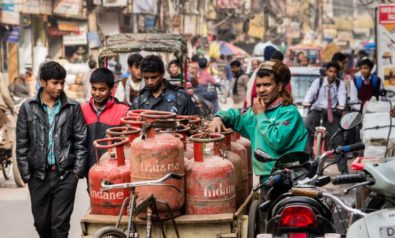Despite making great strides, India is yet to provide energy security to its entire population.
The Indian power sector has come a long way since the sweeping reforms that resulted from liberalization in 1991. The state-dominated power sector was inefficient, hamstrung by lack of maintenance and inadequate investment. The sector was directed to provide very cheap electricity, often at a tariff lower than the cost of production.
After two decades of reform, the unbundling of the power sector and private sector participation, India has become the world’s fifth-largest electricity generator with a capacity at 243 gigawatts (GW). With strong economic growth, the energy demand is estimated to grow from 1,127 terra watt hours (TWh) in 2013 to 3,793 TWh in 2032. The supply, however, has risen by a 5.5% compound annual growth rate (CAGR) from 2007 to 2014, but is expected to grow at a much faster pace in the years to come.
In terms of the current energy mix, thermal energy’s installed capacity stands at 168GW, hydropower at 40.5GW, solar at 3GW and other renewable energy resources at 32GW. The current renewable energy share of around 28% is expected to increase sharply as solar energy becomes a more viable option. (India has huge solar energy potential with average solar irradiation of 5.1 kilowatt hour per square meter (kWh/m2) each day, while the United States’ solar irradiation stands at 4.68kWh/m2 per day).
The energy market has a positive investment climate and has attracted $9 billion of foreign direct investment (FDI) since 2000. There are several domestic and international players active in the renewable energy space, especially in the solar sector. Companies such as First Solar and Sun Edison are success stories in India.
In spite of all the developments, the annual per capita consumption of electricity is low by global standards. 300 million people lack supply of electricity. The state electricity boards, which manage the supply of electricity, are in dire financial state. They are often under pressure to keep prices low by their political bosses, who use low power tariffs as a sop to get elected.
Approximately 700 million Indians live in villages and lack uninterrupted supply of electricity. They use kerosene as their major source of energy apart from cow dung, firewood and crop residue for cooking purposes.
The reasons for this dismal state are political and bureaucratic apathy, as well as the lack of economic viability to connect these villages to the grid. With the advent of solar power along with the increased affordability of solar systems, the federal government has promised to provide electricity to every village in India by 2017-18. There are several new business models in the energy market that are being utilized to achieve this goal. A few innovative companies provide electricity through solar panels on a pay as you go system in far-off rural areas to reduce payment risk, and they use local corner stores as charging vendors for the electricity supply card.
Two other areas of concern that have a direct link to economic growth are industrial and agricultural sector power supply. The dependence of the industrial sector on diesel generators adds a significant slice to the cost of industrial production, with tariff level of $0.25/kwh compared to $0.10/kwh from the grid connected electricity. With roof-top solar models and hybrid solar/diesel systems in the market, this problem is also being slowly addressed. In the agricultural sector, lack of supply of regular electricity impacts regular irrigation supply, which affects crop productivity. Currently, there are 10 million diesel-run water pumps in operation, which are slowly being replaced with solar water pumps.
India faces a significant challenge to provide reliable electricity to 1.3 billion people. If the country is to become an economic power house, it will have to quickly address this problem as more options and resources are at its disposal than ever before.
The views expressed in this article are the author’s own and do not necessarily reflect Fair Observer’s editorial policy.
Photo Credit: Mivr / Shutterstock.com / Flowcomm / Flickr
We bring you perspectives from around the world. Help us to inform and educate. Your donation is tax-deductible. Join over 400 people to become a donor or you could choose to be a sponsor.
Support Fair Observer
We rely on your support for our independence, diversity and quality.
For more than 10 years, Fair Observer has been free, fair and independent. No billionaire owns us, no advertisers control us. We are a reader-supported nonprofit. Unlike many other publications, we keep our content free for readers regardless of where they live or whether they can afford to pay. We have no paywalls and no ads.
In the post-truth era of fake news, echo chambers and filter bubbles, we publish a plurality of perspectives from around the world. Anyone can publish with us, but everyone goes through a rigorous editorial process. So, you get fact-checked, well-reasoned content instead of noise.
We publish 2,500+ voices from 90+ countries. We also conduct education and training programs
on subjects ranging from digital media and journalism to writing and critical thinking. This
doesn’t come cheap. Servers, editors, trainers and web developers cost
money.
Please consider supporting us on a regular basis as a recurring donor or a
sustaining member.
Will you support FO’s journalism?
We rely on your support for our independence, diversity and quality.


















Comment